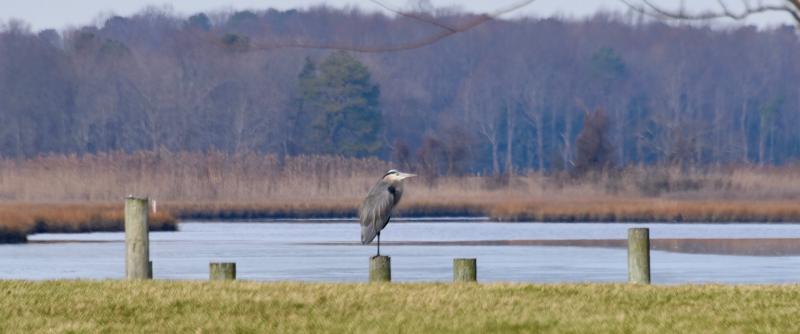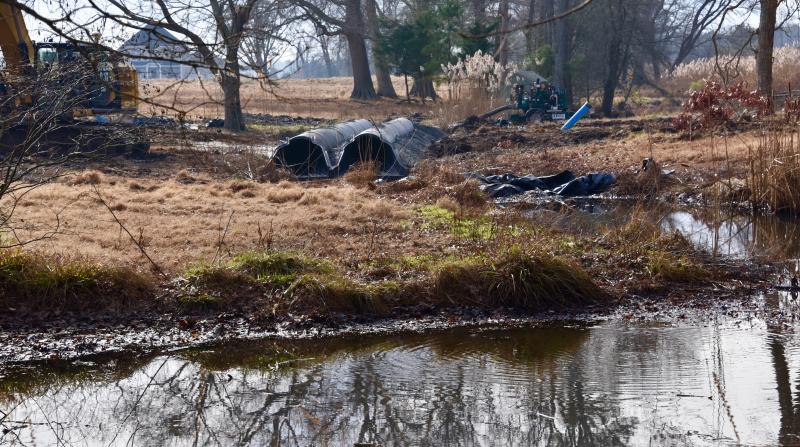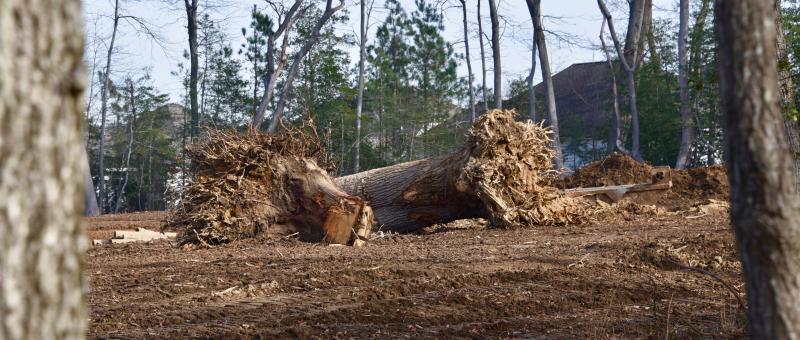The job undertaken by a volunteer Sussex County wetland buffers working group became more daunting than anyone expected.
The stakeholders group ended up meeting 13 times over the past year and still left some key issues yet to be decided. The group was appointed by Sussex County Council to look at updates to the county's wetland buffers ordinance for new residential developments.
Although the group does not have another scheduled meeting, County Administrator Todd Lawson said input from group members should get the outstanding issues resolved prior to an updated draft being written.
At the final meeting Dec. 9, the group agreed that another committee is needed to address drainage issues that surfaced over the past year. Farmers on the group called drainage concerns the most pressing issue facing the agriculture industry in Sussex County.
David Baird, Sussex Conservation District coordinator, said there's an estimated $100 million in needed drainage work statewide with 250 projects pending in Sussex County, some dating back 20 years.
Forest protection is topic
The group agreed that code-designated buffer protection should not have a significant impact on the density of a project. In addition, property owners should be given flexibility in design regarding buffer areas to accommodate site conditions.
Lawson said issues needing more discussion include the types of vegetation placed in a buffer, incentives or disincentives for clear-cutting trees, and access for buffer and water resource maintenance.
County staff informed the group the proposed ordinance does not prohibit the practice of clear-cutting forests even down to the water line.
The group is divided on whether existing forested buffers should be preserved in their natural state to the maximum extent possible or whether selective clear-cutting of woods should be allowed.
Possible incentives – such as smaller buffers – were discussed to keep developers and farmers from clear cutting property. A proposal would allow selective clearing of up to 30 percent of wooded areas.
Discussion also took place that the county could consider increased density as an incentive for additional resource protection.
Center for the Inland Bays Director Chris Bason said as many trees as possible should be preserved for an optimum buffer because forests are disappearing rapidly in eastern Sussex.
Increased, new buffers included
Among key recommendations in the proposed ordinance is increased widths in buffers for tidal waters and wetlands from 50 feet to 100 feet. In addition, 30-foot buffers are proposed for nontidal wetlands and 50-foot buffers for nontidal streams and rivers. The county's current ordinance does not require buffers on nontidal wetlands.
County staff and legal staff are in the process of completing a draft ordinance for the working group to read and comment on before it's presented to county council for introduction and public hearings.
“The last chapter is out there. The story is still being written,” Lawson said.
Need for forested buffers
Group consensus is that forested buffers are preferred to safeguard tidal and nontidal wetlands. However, there doesn't appear to be consensus on the best buffers for other waterways, including perennial streams.
Seaford-area farmer R.C. Willin said a combination of woods and meadows would allow for easier access for maintenance of streams when drainage issues arise. It would also allow for an improved habitat for wildlife, including deer, with more food for wildlife, he said.
Willin said forested buffers along streams do not provide habitat for deer, which are forced to look for food in residential areas. “Part of the buffer could be grass to feed animals within the buffer area,” he said.
Willin said hay could be planted and harvested at no expense to a homeowners association. “This would remove nitrates and phosphorus and improve water quality, and change the character and functionality of buffers. It's a novel idea. I'm asking for a vision,” he said.
Environmental consultant Ed Launay had strong words for that proposal. “We have a lot of other habitats in Sussex County. We don't need to manage a forested buffer to feed deer. That's environmentally insane and going way beyond the scope of any buffer,” he said.
Maintaining buffers
The group spent a lot of time discussing access to buffer areas for maintenance.
The proposed ordinance calls for a resource and buffer management plan prepared by a qualified professional that describes measures for maintaining or improving resources and buffers. It would be presented at the time of preliminary site-plan review by Sussex County Planning and Zoning Commission.
The plan would include the name of the party responsible for ongoing maintenance and an access easement for perpetual maintenance.
Assistant county attorney Vince Robertson said concern arises over who pays the bills when a homeowners association doesn't do required buffer or ditch maintenance.
Launay said in Worcester County, Md., officials have the right to inspect and maintain buffers if landowners or homeowners associations do not follow through.
“That would be a big leap for Sussex County,” Robertson said. “It would impact enforcement, staff and contracts – something different than we've done in the past,” he said.
Robertson said access points to buffers or water resources are required on project site plans.
Robert Tunnell III, of Tunnell Companies, asked the group to consider allowing plants and trees other than Delaware native species to be planted in buffers. “There are other options and there are some better plantings. Using Delaware native species is too restrictive,” he said.
Bason argued that as more development occurs, more native species are being lost, which degrades local wildlife habitat.
The proposed ordinance
The proposed ordinance includes the following:
Tidal waters and tidal wetlands: 100 feet
Perennial nontidal rivers and streams: 50 feet
Nontidal wetlands: 30 feet
Intermittent streams: 30 feet
Tax ditches: no buffers required.
Under the proposal, a buffer is divided in half – Zone A, the area closest to the resource with the most protection, and Zone B. A list is provided for what activities and construction are permitted in each zone.
For example, sewage disposal plants, landfills, and waste storage and amenities such as pools and clubhouses would not be permitted in either zone.
Buffer averaging would be permitted allowing a developer/landowner to reduce buffer width in one area if an increase in buffer width is provided in another area. Averaging would be permitted only in Zone B.
Information on the proposed ordinance and working group can be found at www.sussexcountyde.gov. On the home page, click on the government tab and then department listing and click on planning and zoning. The wetlands and buffers working group link can be found on the left side of the page.



















































